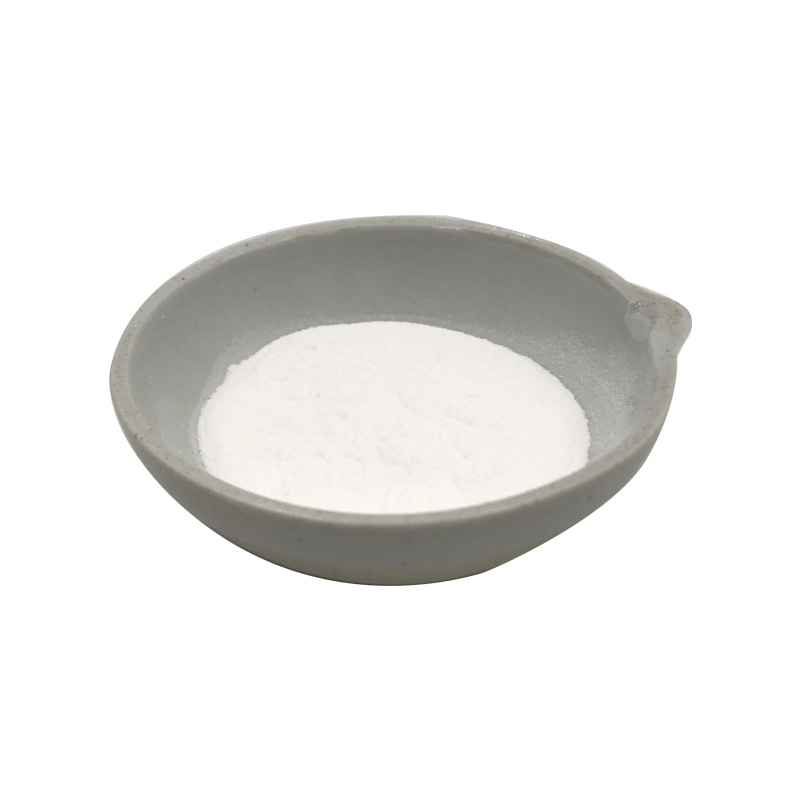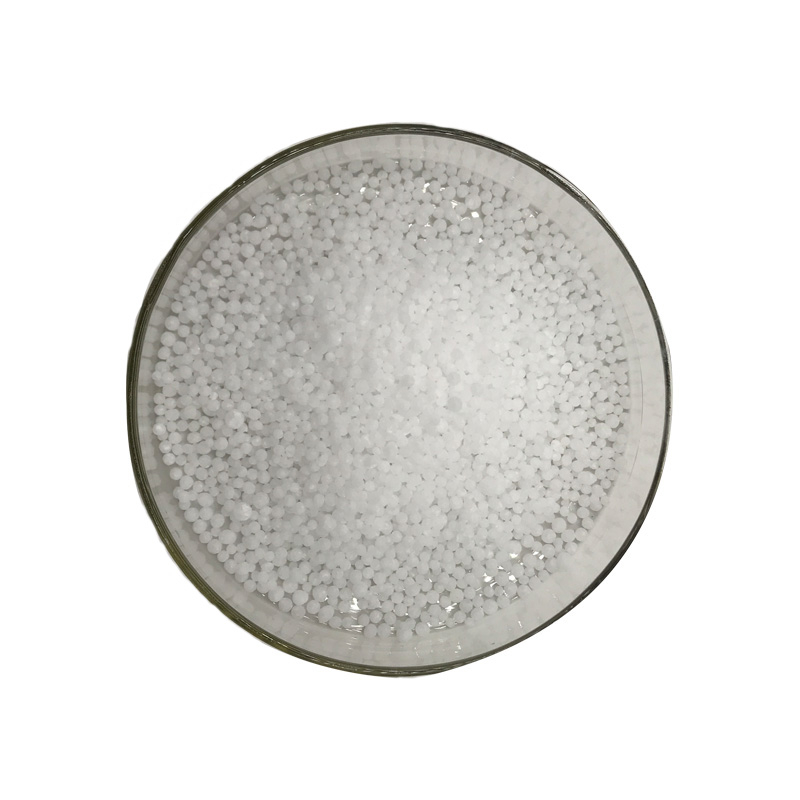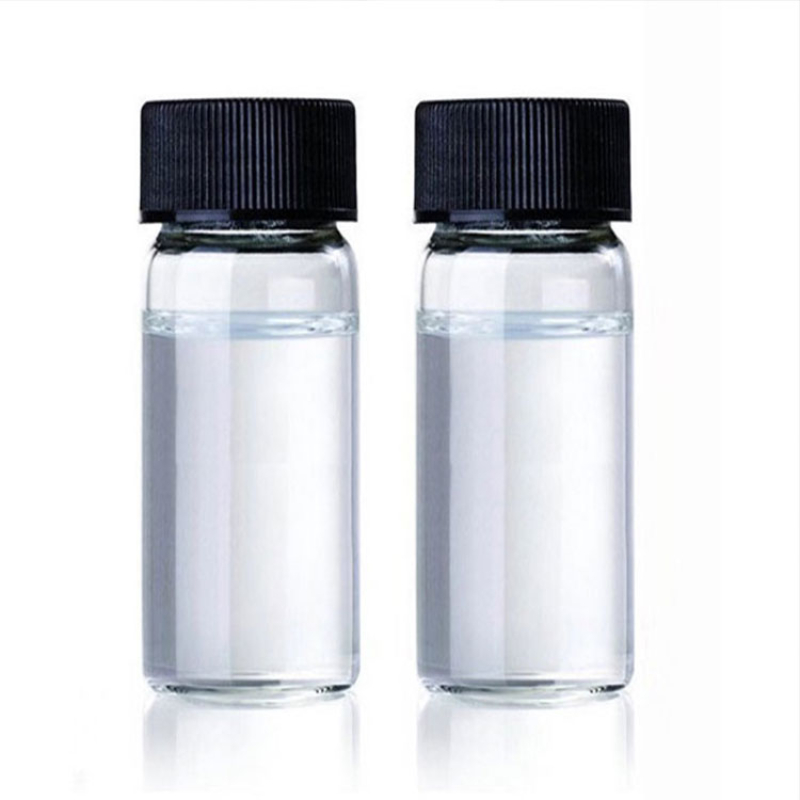Products Description of 5-Chloro-2-(methylamino)benzophenone CAS#1022-13-5Yellow or reddish yellow granular crystals.5-Chloro-2-(methylamino)benzophenone Chemical PropertiesMelting point 93-95 °C (lit.)Boiling point 421.9±35.0 °C(Predicted)density 1.234±0.06 g/cm3(Predicted)storage temp. Keep in dark place,Inert atmosphere,Room temperaturesolubility Chloroform (Slightly), Dichloromethane (Slightly), DMSO (Slightly), Methanol (Very Slightly)form SolidpkapKa 1.45±0.04(7% EtOH in H2O,t =25,0.02 to 0.40M in HCl) (Uncertain)color Light Yellow to YellowBRN&nbs
Contact Now
Products Description of Methylcyclopentadienyl manganese tricarbonyl CAS#12108-13-3Methylcyclopentadienyl manganese tricarbonyl, a metallic manganese compound. Combustible, highly toxic, decomposes into toxic manganese oxide fumes in fires.
Contact Now
Products Description of Bretazenil CAS#84379-13-5Brotacetin is a partial agonist of the GABAA receptor of the benzodiazepine class. It was first developed by Roche as an antianxiety drug. Studies have found that brotacetin can counteract the spasms caused by pentamethazine. At an antispasmodic dose (125-250 μg·kg-1), brotacetin combined with pyridostigmine (100 μg·kg-1, im) and aprofen (4 mg·kg-1, im) can prevent sarin and soman poisoning. Brotacetin has good antianxiety activity at a dose of 50-400 μg·kg-1. Compared with diazepam, it has little adverse reaction of myasthenia.
Contact Now
Products Description of Pyridine hydrochloride CAS#628-13-7Pyridine, an organic compound, is a six-membered heterocyclic compound containing a nitrogen atom. It can be regarded as a compound in which one (CH) in the benzene molecule is replaced by N, so it is also called nitrogen benzene. It is a colorless or slightly yellow liquid with a foul odor. Pyridine and its homologues exist in bone tar, coal tar, coal gas, shale oil, and petroleum.
Contact Now
Urea CAS#57-13-6The urea molecule is planar in the crystal structure, but the geometry around the nitrogens is pyramidal in the gas-phase minimum-energy structure. In solid urea, the oxygen center is engaged in two N-H-O hydrogen bonds. The resulting dense and energetically favourable hydrogen-bond network is probably established at the cost of efficient molecular packing: The structure is quite open, the ribbons forming tunnels with square cross-section.
Contact Now
Products Description of Urea CAS#57-13-6When the temperature is below 20℃ and the relative humidity is below 70%, urea not only does not absorb moisture, but also evaporates water to reduce its water content; when the temperature exceeds 20℃ and the relative humidity is higher than 80%, it begins to absorb moisture, and in severe cases, it becomes a paste. When the air turns dry again, it will re-agglomerate, and its degree is second only to ammonium nitrate.
Contact Now
Products Description of Diethyl Ethoxymethylenemalonate CAS#87-13-8Ethoxymethylene, also known as diethyl ethoxymethylenemalonate, is a colorless, transparent and viscous liquid. It is an important pharmaceutical intermediate and is widely used in the synthesis of medicines, pesticides and auxiliaries.
Contact Now
Acrylonitrile CAS#107-13-1 Acrylonitrile is a colourless, flammable liquid. Its vapours might also explode when uncovered to an open flame. Acrylonitrile does now not take place naturally. It is produced in very giant quantities through numerous chemical industries in the United States, and its requirement and demand are growing in latest years. Acrylonitrile is a closely produced, unsaturated nitrile.
Contact Now
Products Description of 2,5-Dimethyl-2,4-Hexadiene CAS#764-13-62,5-Dimethyl-2,4-hexadiene is a chemical,Insoluble in water, soluble in alcohol and ether.2,5-Dimethyl-2,4-hexadiene Chemical PropertiesMelting point 12 °CBoiling point 132134°Cdensity 0.773 g/mL at 25 °C(lit.)vapor density 3.8 (vs air)vapor pressure 26.9 mm Hg ( 37.7 °C)refractive index n20/D 1.476(lit.)Fp 85 °Fstorage temp. Flammables areasolubility Chloroform, Ethyl Acetateform Oilcolor Clear ColourlessBRN 1733342LogP3.500CAS DataBase Refer
Contact Now
Methylcyclopentadienyl Manganese Tricarbonyl CAS# 12108-13-3Manganese, tricarbonyl methylcyclopentadienyl is a dark orange liquid. Faintly pleasant, herb-like odor. Molecular weight= 218.10;Boiling point=232℃; Freezing/Melting point=18℃; Flash point=74℃; 96℃. Hazard Identification (based on NFPA-704 M Rating System): Health 3, Flammability 0, Reactivity 0.
Contact Now
Products Description of Sodium 4-amino-1-naphthalenesulfonate CAS#130-13-2White or off-white flaky crystals. Easily soluble in water, soluble in 95% ethanol, insoluble in ether, slightly soluble in concentrated caustic alkali aqueous solution and ethanol solution. It is an important azo pigment intermediate, widely used in the synthesis of direct dyes and reactive dyes.
Contact Now
Products Description of Kavain CAS#3155-48-4White crystalline powder, soluble in organic solvents such as methanol, ethanol, DMSO, etc., derived from Kava pepper.Kavain Chemical PropertiesMelting point 142-148 °CBoiling point 432.6±45.0 °C(Predicted)density 1.15±0.1 g/cm3(Predicted)storage temp. Amber Vial, -20°C Freezer, Under inert atmospheresolubility Chloroform (Slightly), Ethyl Acetate (Slightly)color Off-White to Pale YellowBRN 177877Stability:Light and Moisture SensitiveInChIInChI=1S/C14H14O3/c1-16-13-9-12(17-14(15)10-13)8-7-11-5-3-2-4-6-11/h
Contact Now
Products Description of PRL-8-53 CAS#51352-87-5White crystal powderPRL-8-53 Chemical Propertiesstorage temp. under inert gas (nitrogen or Argon) at 2-8°Csolubility DMF: 30 mg/ml DMSO: 30 mg/ml Ethanol: 30 mg/ml PBS (pH 7.2): 10 mg/mlform A crystalline solidInChIInChI=1S/C18H21NO2.ClH/c1-19(14-16-7-4-3-5-8-16)12-11-15-9-6-10-17(13-15)18(20)21-2;/h3-10,13H,11-12,14H2,1-2H3;1HInChIKeyHLBBSWSJLPLPRU-UHFFFAOYSA-NSMILESC(OC)(=O)C1=CC=CC(CCN(CC2=CC=CC=C2)C)=C1.[H]ClFactory and Equipment ShowFast delivery timeInventory 2-3 working days New production 7-10 working days
Contact Now
Products Description of PyridiniumCAS#68909-18-2White powderPyridinium, 1-(phenylmethyl)-, ethyl methyl derivs., chlorides Chemical PropertiesBoiling point 116.34℃[at 101 325 Pa]density 1.104[at 20℃]vapor pressure 2hPa at 20℃Water Solubility 100g/L at 30℃InChIInChI=1S/C13H16N.ClH/c1-14(10-6-3-7-11-14)12-13-8-4-2-5-9-13;/h2-10H,11-12H2,1H3;1H/q+1;/p-1InChIKeyNBNVYJFZJWMHPR-UHFFFAOYSA-MSMILESC1[N+](CC2=CC=CC=C2)(C)C=CC=C1.[Cl-]LogP3 at 25℃EPA Substance Registry System1-(Phenylmethyl)pyridinium Et Me derivs., chlorides (68909-18-2)Factory and Equipment ShowFast delivery t
Contact Now
4,4'-DIBROMO-2,2'-BIPYRIDINE Chemical PropertiesMelting point 138.0 to 142.0 °CBoiling point 362.9±37.0 °C(Predicted)density 1.809±0.06 g/cm3(Predicted)storage temp. Keep in dark place,Sealed in dry,Room Temperaturesolubility soluble in Tolueneform powder to crystalpka2.59±0.18(Predicted)color White to Light yellowInChIInChI=1S/C10H6Br2N2/c11-7-1-3-13-9(5-7)10-6-8(12)2-4-14-10/h1-6HInChIKeyKIIHBDSNVJRWFY-UHFFFAOYSA-NSMILESC1(C2=NC=CC(Br)=C2)=NC=CC(Br)=C1CAS DataBase Reference18511-71-2Safety InformationRisk Statements 36/37/38Safety Statements&nb
Contact Now
Products Description of Color Developing Agent CD-3 CAS#24567-76-8White powder crystalColor Developing Agent CD-3 Chemical PropertiesWater Solubility Soluble in waterform powder to crystalcolor White to Light yellow to Light orangeInChIInChI=1S/2C12H21N3O2S.3H2O4S/c2*1-4-15(8-7-14-18(3,16)17)11-5-6-12(13)10(2)9-11;3*1-5(2,3)4/h2*5-6,9,14H,4,7-8,13H2,1-3H3;3*(H2,1,2,3,4)InChIKeyNPDFXFLCEDDWEG-UHFFFAOYSA-NSMILESC1(=CC=C(N)C(C)=C1)N(CC)CCNS(=O)(=O)C.C1(=CC=C(N)C(C)=C1)N(CC)CCNS(=O)(=O)C.S(=O)(=O)(O)O.S(=O)(=O)(O)O.S(=O)(=O)(O)OSafety InformationHazard Codes Xn;N,N,XnRisk
Contact Now
Products Description of 1,3-bis(3-glycidoxypropyl)tetramethyldisiloxane CAS#126-80-7Colorless liquid1,3-bis(3-glycidoxypropyl)tetramethyldisiloxane Chemical PropertiesMelting point <0°CBoiling point 184 °C2 mm Hg(lit.)density 0.996 g/mL at 20 °C(lit.)refractive index n20/D 1.452Fp 110°CSpecific Gravity0.996Hydrolytic Sensitivity3: reacts with aqueous baseBRN 223966InChIInChI=1S/C16H34O5Si2/c1-22(2,9-5-7-17-11-15-13-19-15)21-23(3,4)10-6-8-18-12-16-14-20-16/h15-16H,5-14H2,1-4H3InChIKeyMFIBZDZRPYQXOM-UHFFFAOYSA-NSMILES[Si](C)(C)(
Contact Now
Products Description of ATP Disodium Salt CAS#987-65-5DISODIUM ADENOSINE TRIPHOSPHATE, alias: 5'-adenosine triphosphate disodium salt. Adenosine triphosphate disodium is mainly used as a skin conditioner in cosmetics and skin care products.
Contact Now
Products Description of 2-Bromo-5-nitropyridine CAS#4487-59-62-Bromo-5-nitropyridine is an off-white to pale yellow crystal used in the synthesis of pharmaceutical intermediates. 2-Bromo-5-nitropyridine can be prepared from 2-hydroxy-5-nitropyridine by bromination reaction.
Contact Now
Products Description of Indole-5-Carboxylic Acid CAS#1670-81-1Indole-5-carboxylic acid is a pharmaceutical intermediate.Indole-5-Carboxylic Acid Chemical PropertiesMelting point 211-213 °C (lit.)Boiling point 287.44°C (rough estimate)density 1.2480 (rough estimate)refractive index 1.5050 (estimate)storage temp. Keep in dark place,Sealed in dry,Room Temperaturesolubility Soluble in ethanol (50 mg/ml), dimethyl sulfoxide and methanol.pka4.40±0.30(Predicted)form Powdercolor Light beige to yellowBRN 124391InChIKeyIENZCGNHSIMFJE-UHFFFAOYSA-NCAS Data
Contact Now
Products Description of 5-CyanoindoleCAS#15861-24-2Off-white crystals, melting point 106-107℃.5-Cyanoindole Chemical PropertiesMelting point 106-108 °C(lit.)Boiling point 249.72°C (rough estimate)density 1.1777 (rough estimate)refractive index 1.6211 (estimate)storage temp. Keep in dark place,Inert atmosphere,Room temperaturesolubility Chloroform, Hexane, Methanolform Crystalline Powderpka15.62±0.30(Predicted)color White to slightly yellowWater Solubility Soluble in chloroform, hexane and methanol.
Contact Now
Products Description of Dibenz[b,f]azepine-5-carbonyl chlorideCAS#33948-22-0Crystallization (toluene).
Contact Now
Products Description of 5-Chlorothiophene-2-Sulfonamide CAS#53595-66-72-Chlorothiophene-5-sulfonamide is a white powder crystal, which is often used as a pharmaceutical intermediate and pharmaceutical raw material.5-Chlorothiophene-2-Sulfonamide Chemical PropertiesMelting point 113-117 °C(lit.)Boiling point 366.3±52.0 °C(Predicted)density 1.649±0.06 g/cm3(Predicted)storage temp. under inert gas (nitrogen or Argon) at 2–8 °Csolubility soluble in Methanolform powder to crystalpka9.75±0.60(Predicted)color White to Light yellow to GreenCAS DataBase Refe
Contact Now
Products Description of Pectin CAS#9000-69-5 Pectin (English: pectin) is a natural high molecular compound. It is mainly found in all higher plants and is an important component of plant cell matrix. Pectin is deposited in the primary cell wall and intercellular layer. In the primary wall, it cross-links with microfibrils of cellulose, hemicellulose, lignin and certain extensins of different contents, making various cell tissue structures hard and showing inherent morphology, and serving as a supporting substance for internal cells.
Contact Now























![Dibenz[b,f]azepine-5-carbonyl chlorideCAS#33948-22-0](https://d3rnfhc14zcmdf.cloudfront.net/cdn/ff/hhNHV6f2JUcBq-BPrkFDyfPcYc9mG8tYKIw3GCEP6Wk/1716974888/public/styles/chanpinzhutu/public/2024-05/%E7%99%BD%E8%89%B2%E7%B2%89%E6%9C%AB%20%283%29_30.jpg?itok=-yg_9SCp)









